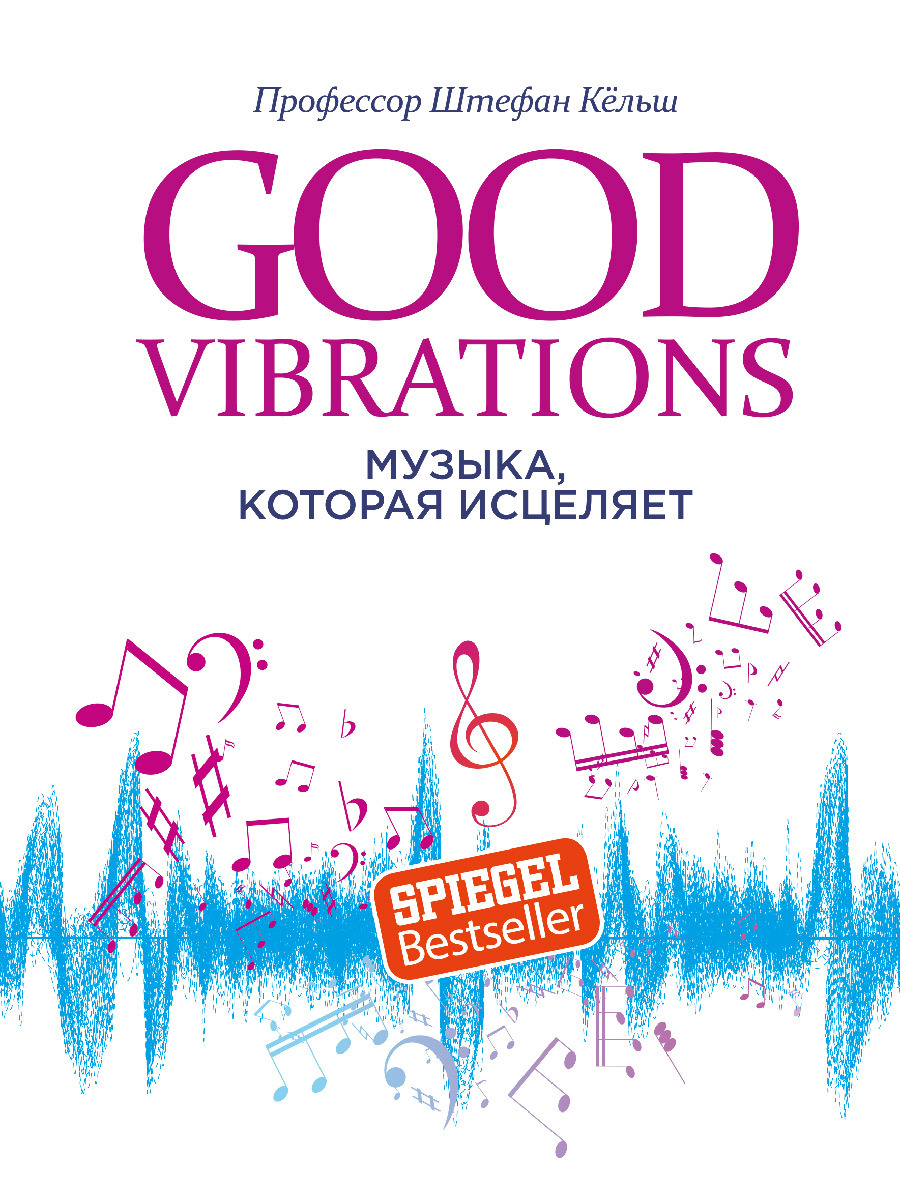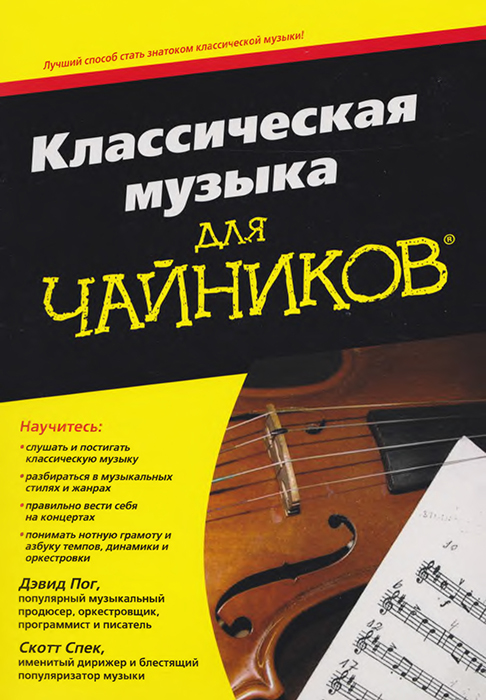Читать книгу - "Good Vibrations. Музыка, которая исцеляет - Штефан Кёльш"
Аннотация к книге "Good Vibrations. Музыка, которая исцеляет - Штефан Кёльш", которую можно читать онлайн бесплатно без регистрации
Эта книга рассказывает о влиянии музыки на физическое и ментальное здоровье человека. Профессор Кёльш утверждает, что музыка лежит в основе человеческой сущности и что музыкальность присуща каждому человеку. Опираясь на новейшие научные исследования, автор рассказывает о влиянии музыки на гормональную, иммунную, вегетативную нервную систему; о том, что происходит в мозге при прослушивании музыки; о влиянии музыки на состояние здоровья и о ее способности лечить болезни и бороться с зависимостями. Вы найдете здесь много практических советов, упражнений и даже списки для прослушивания. Не обязательно читать всю книгу целиком. Вы можете прочесть только нужный вам раздел или знакомиться с частями в любой последовательности. Для всех, кто любит музыку и желает укрепить здоровье.
167
Schlaug, G., Marchina, S., & Norton, A. (2009): Evidence for plasticity in white-matter tracts of patients with chronic Broca’s aphasia undergoing intense intonation-based speech therapy, Annals of the New York Academy of Sciences, 1169 (1), S. 385–394.
168
Wan, C. Y., Zheng, X., Marchina, S., Norton, A., & Schlaug, G. (2014): Intensive therapy induces contralateral white matter changes in chronic stroke patients with Broca’s aphasia, Brain and Language, 136, S. 1–7.
169
Halwani, G. F., Loui, P., Rueber, T., & Schlaug, G. (2011): Effects of practice and experience on the arcuate fasciculus: comparing singers, instrumentalists, and non-musicians, Frontiers in Psychology, 2, S. 156.
170
Thaut, M.H., Leins, A.K., Rice, R.R. et al. (2007): Rhythmic auditory stimulation improves gait more than NDT/Bobath training in near-ambulatory patients early poststroke: a single-blind, randomized trial, Neurorehabilitation Neural Repair, 21, S. 455–459.
171
Thaut, M.H., McIntosh, G.C., Rice, R.R (1997): Rhythmic facilitation of gait training in hemiparetic stroke rehabilitation, Journal of Neurological Sciences, 151, S. 207–212.
172
Moumdjian, L., Sarkamo, T., Leone, C., Leman, M., & Feys, P. (2017): Effectiveness of music-based interventions on motricity or cognitive functioning in neurological populations: a systematic review, European Journal of Physical and Rehabilitation Medicine, 53 (3), S. 466–482.
173
Cha, Y., Kim, Y., Hwang, S., Chung, Y. (2004): Intensive gait training with rhythmic auditory stimulation in individuals with chronic hemiparetic stroke: a pilot randomized controlled study, NeuroRehabilitation, 35, S. 681–688.
174
Jeong, S., Kim, M.T (2007): Effects of a theory-driven music and movement program for stroke survivors in a community setting, Applied Nursing Research, 20, S. 125–131.
175
Schneider, S., Schönle, P. W., Altenmüller, E., & Münte, T. F. (2007): Using musical instruments to improve motor skill recovery following a stroke, Journal of Neurology, 254 (10), S. 1339–1346.
176
Schneider, S., Münte, T., Rodriguez-Fornells, A., Sailer, M., & Altenmüller, E. (2010): Music-supported training is more efficient than functional motor training for recovery of fine motor skills in stroke patients, Music Perception: An Interdisciplinary Journal, 27 (4), S. 271–280.
177
Veerbeek, J. M., van Wegen, E., van Peppen, R., van der Wees, P. J., Hendriks, E., Rietberg, M., & Kwakkel, G. (2014): What is the evidence for physical therapy poststroke? A systematic review and meta-analysis, PLoS One, 9 (2), e87987; Peurala, S. H., Kantanen, M. P., Sjögren, T., Paltamaa, J., Karhula, M., & Heinonen, A. (2012): Effectiveness of constraint-induced movement therapy on activity and participation after stroke: a systematic review and meta-analysis of randomized controlled trials, Clinical Rehabilitation, 26 (3), S. 209–223.
178
Whitall, J., Waller, S. M., Sorkin, J. D. et al. (2011): Bilateral and unilateral arm training improve motor function through differing neuroplastic mechanisms: a single-blinded randomized controlled trial, Neurorehabilitation Neural Repair, 25, S. 118–129.
179
Cuddy, L. L., & Duffin, J. (2005): Music, memory, and Alzheimer’s disease: is music recognition spared in dementia, and how can it be assessed?, Medical Hypotheses, 64 (2), S. 229–235.
180
Cuddy, L. L., Duffin, J. M., Gill, S. S., Brown, C. L., Sikka, R., & Vanstone, A. D. (2012): Memory for melodies and lyrics in Alzheimer’s disease, Music Perception: An Interdisciplinary Journal, 29 (5), S. 479–491.
181
Vanstone, A. D., & Cuddy, L. L. (2009): Musical memory in Alzheimer disease, Aging, Neuropsychology, and Cognition, 17 (1), S. 108–128.
182
Moussard, A., Bigand, E., Belleville, S., & Peretz, I. (2014): Learning sung lyrics aids retention in normal ageing and Alzheimer’s disease, Neuropsychological Rehabilitation, 24 (6), S. 894–917.
183
El Haj, M., Antoine, P., Nandrino, J. L., Gély-Nargeot, M. C., & Raffard, S. (2015): Self-defining memories during exposure to music in Alzheimer’s disease, International Psychogeriatrics, 27 (10), S. 1719–1730.
184
El Haj, M., Fasotti, L., & Allain, P. (2012): The involuntary nature of music-evoked autobiographical memories in Alzheimer’s disease, Consciousness and Cognition, 21 (1), S. 238–246.
185
Jacobsen, J. H., Stelzer, J., Fritz, T. H., Chételat, G., La Joie, R., & Turner, R. (2015): Why musical memory can be preserved in advanced Alzheimer’s disease, Brain, 138 (8), S. 2438–2450.
186
Goris, E. D., Ansel, K. N., & Schutte, D. L. (2016): »Quantitative systematic review of the effects of non-pharmacological interventions on reducing apathy in persons with dementia«, Journal of Advanced Nursing, 72 (11), S. 2612–2628; Cammisuli, D. M., Danti, S., Bosinelli, F., & Cipriani, G. (2016): Non-pharmacological interventions for people with Alzheimer’s disease: a critical review of the scientific literature from the last ten years, European Geriatric Medicine, 7 (1), S. 57–64.
187
Fang, R., Ye, S., Huangfu, J., & Calimag, D. P. (2017): Music therapy is a potential intervention for cognition of Alzheimer’s Disease: a mini-review, Translational Neurodegeneration, 6 (1), S. 2; Peck, K. J., Girard, T. A., Russo, F. A., & Fiocco, A. J. (2016): Music and memory in Alzheimer’s disease and the potential underlying mechanisms, Journal of Alzheimer’s Disease, 51 (4), S. 949–959.
188
Fang, R., Ye, S., Huangfu, J., & Calimag, D. P. (2017): Music therapy is a potential intervention for cognition of Alzheimer’s Disease: a mini-review, Translational Neurodegeneration, 6 (1), S. 2.
189
Brett, L., Traynor, V., & Stapley, P. (2016): Effects of physical exercise on health and well-being of individuals living with a dementia in nursing homes: a systematic review, Journal of the American Medical Directors Association, 17 (2), S. 104–116.
190
McIntosh, G. C., Brown, S. H., Rice, R. R., & Thaut, M. H. (1997): Rhythmic auditory-motor facilitation of gait patterns in patients with Parkinson’s disease, Journal of Neurology, Neurosurgery & Psychiatry, 62 (1), S. 22–26.
191
Arias, P., & Cudeiro, J. (2010): Effect of rhythmic auditory stimulation on gait in Parkinsonian patients with and without freezing of gait, PLoS One, 5 (3), e9675.
Прочитали книгу? Предлагаем вам поделится своим впечатлением! Ваш отзыв будет полезен читателям, которые еще только собираются познакомиться с произведением.
Оставить комментарий
-
 Вера Попова27 октябрь 01:40
Любовь у всех своя-разная,но всегда это слово ассоциируется с радостью,нежностью и счастьем!!! Всем добра!Автору СПАСИБО за добрую историю!
Любовь приходит в сентябре - Ника Крылатая
Вера Попова27 октябрь 01:40
Любовь у всех своя-разная,но всегда это слово ассоциируется с радостью,нежностью и счастьем!!! Всем добра!Автору СПАСИБО за добрую историю!
Любовь приходит в сентябре - Ника Крылатая
-
 Вера Попова10 октябрь 15:04
Захватывает,понравилось, позитивно, рекомендую!Спасибо автору за хорошую историю!
Подарочек - Салма Кальк
Вера Попова10 октябрь 15:04
Захватывает,понравилось, позитивно, рекомендую!Спасибо автору за хорошую историю!
Подарочек - Салма Кальк
-
 Лиза04 октябрь 09:48
Роман просто супер давайте продолжение пожалуйста прочитаю обязательно Плакала я только когда Полина искала собаку Димы барса ♥️ Пожалуйста умаляю давайте еще !))
По осколкам твоего сердца - Анна Джейн
Лиза04 октябрь 09:48
Роман просто супер давайте продолжение пожалуйста прочитаю обязательно Плакала я только когда Полина искала собаку Димы барса ♥️ Пожалуйста умаляю давайте еще !))
По осколкам твоего сердца - Анна Джейн
-
 yokoo18 сентябрь 09:09
это прекрасный дарк роман!^^ очень нравится
#НенавистьЛюбовь. Книга вторая - Анна Джейн
yokoo18 сентябрь 09:09
это прекрасный дарк роман!^^ очень нравится
#НенавистьЛюбовь. Книга вторая - Анна Джейн





